Maharakeke-Pōrangahau Sub-catchments
The Maharakeke and Pōrangahau sub-catchments together cover an area of 16,159 hectares located in Central Hawke’s Bay, near to the town of Takapau. It is part of the wider Tukituki catchment. The two main streams in this catchment are the Maharakeke and Pōrangahau, which join together on the eastern side (near Hatuma Lime Company) before flowing into Tukituki River. The Maharakeke and Pōrangahau Streams are identified as a source for trout spawning, and habitat to numerous species of native fish and macroinvertebrates.
Introduction
The Maharakeke and Pōrangahau sub-catchment is a priority area for water quality within the Hawke’s Bay Regional Council, due to exceeding targeted levels of dissolved inorganic nitrogen and phosphorous concentrations in its waterways. Therefore, the farmers and surrounding community have been working together in reducing nutrient losses and improving water quality outcomes in the catchment streams. They have formed the ‘Watch Our Water – Maharakeke and Pōrangahau (WOW-MAP) Streams Catchment Group,’ which is part of the wider local catchment collective ‘Tukituki Land Care’ (TLC). TLC is a farmer-led collective supporting sub-catchments of the Tukituki River.
Watch the video to learn more about the group and what they are doing in this area to mitigate nitrate loss into their catchment area.
Hawkes Bay Regional Council has co-funded with MFE and Massey University a collaborative project, the Catchment Solutions Project (CSP) aiming to enhance rural capability to achieve essential freshwater outcomes. HBRC, Massey, WOW-MAP and TLC have been working together with the Catchment Solutions Project developing and sharing practical tools to assess key water quality contaminants, their critical flow pathways, and building pilot demonstrations of edge-of-field mitigation practices to reduce nitrogen, phosphorous and sediment in flow pathways in the Maharakeke- Pōrangahau sub-catchment and wider Tukituki catchment
An interview with Richard Wakelin from the Hawkes Bay Regional Council
Richard Wakelin from the Hawkes Bay Regional Council discusses how the Catchment Solutions Project and HBRC was keen to work with farmers, growers and landowners in the wider Tukituki catchment. Hear about how they have identified some of the mitigation tools or some of the practices that can be adopted on farm, to address water quality challenges.
Farmer interviews
Meet the Maharakeke Pōrangahau catchment farmers who were keen to learn how they could mitigate the effects of sediment and nitrate from their waterways. They discuss how they have helped to reduce nutrient and sediment runoff in their catchment by building two edge-of-field mitigation technologies – a woodchip bioreactor and a detainment bund P120.
Learn about their experiences as they collaborated with the Catchment Solutions team to achieve this.
Visit the 2 edge of field mitigation technologies in this catchment:
The Maharakeke Pōrangahau Bioreactor tour
Take a tour of the Maharakeke Pōrangahau woodchip bioreactor – a novel edge-of-field practice being developed to reduce losses of nitrate from agricultural lands. They harness natural biodegradation processes to create an environment where soil microorganisms effectively break down nitrate in drainage waters. They are easy to build, require low maintenance, and last 10-15 years before the woodchips need to be replaced to maintain their effectiveness.
The Maharakeke Pōrangahau Detainment Bund P120 tour
Take a tour of the Maharakeke Pōrangahau Detainment Bund PS120© built in this catchment. It is a special type of sediment trap to temporarily detain stormwater runoff from pasture lands. It intercepts stormwater run-off by briefly ponding it on pasture to reduce significant amounts of sediment, phosphorus, and pathogens. Runoff ponding is achieved by constructing low earth bunds across valley floors where water flows during high-intensity rain storm events. Water ponding is controlled by a flow structure and a spill way in case of a very high runoff event. Pasture growth in the ponding area is not compromised due to temporary storage and then release of the ponded water.
Collaborative Catchment Analysis
FACTS & FIGS
Click to enlarge the images
WATER QUALITY TREND
For both Porangahau and Maharakeke streams, the water quality trends are similar. The concentrations of dissolved inorganic nitrogen and nitrate-N are in the worst 50% of all the sites measured by Land Air Water Aotearoa (LAWA) monitoring. However, the trend for the next 5 years is very likely to improve. The concentrations of dissolved reactive phosphorous (DRP) are also in the worst 50% of all the sites measured, but in this case the trend is likely to degrade.
Source:
critical flow pathways
possible mitigations
In addition to best management practices on the farms, constructed wetlands, improved drains design, woodchip bioreactors and detainment bunds are effective potential edge-of-field practices.
View a tour of a Bioreactor at Dairy Farm 4 Massey University.
View a tour of a Detainment Bund in the Mangaone Catchment
View a tour of a Bioreactor in the Haynes Creek Catchment
Check out the Field day event held at Massey University in June 2023 and the Field day event held at Tui Brewery in 2024 for more information on potential solutions to prevent contaminant runoff.




















